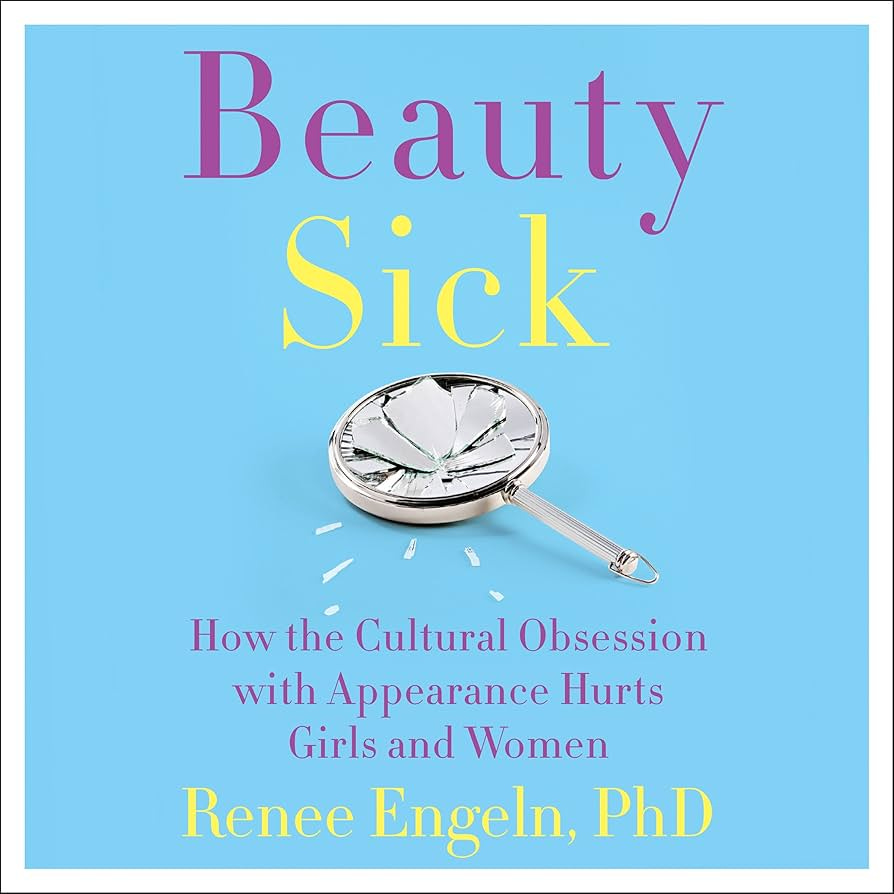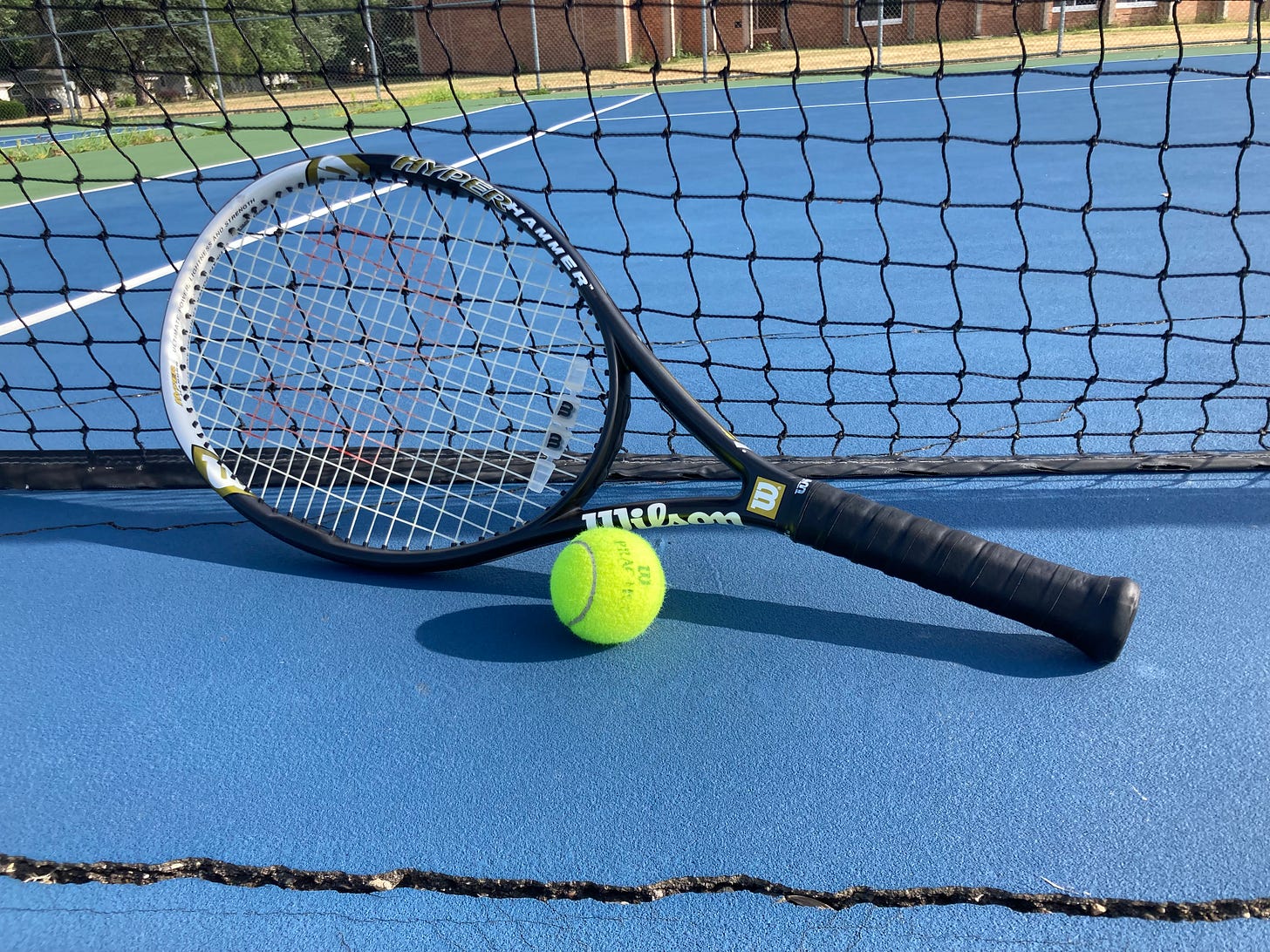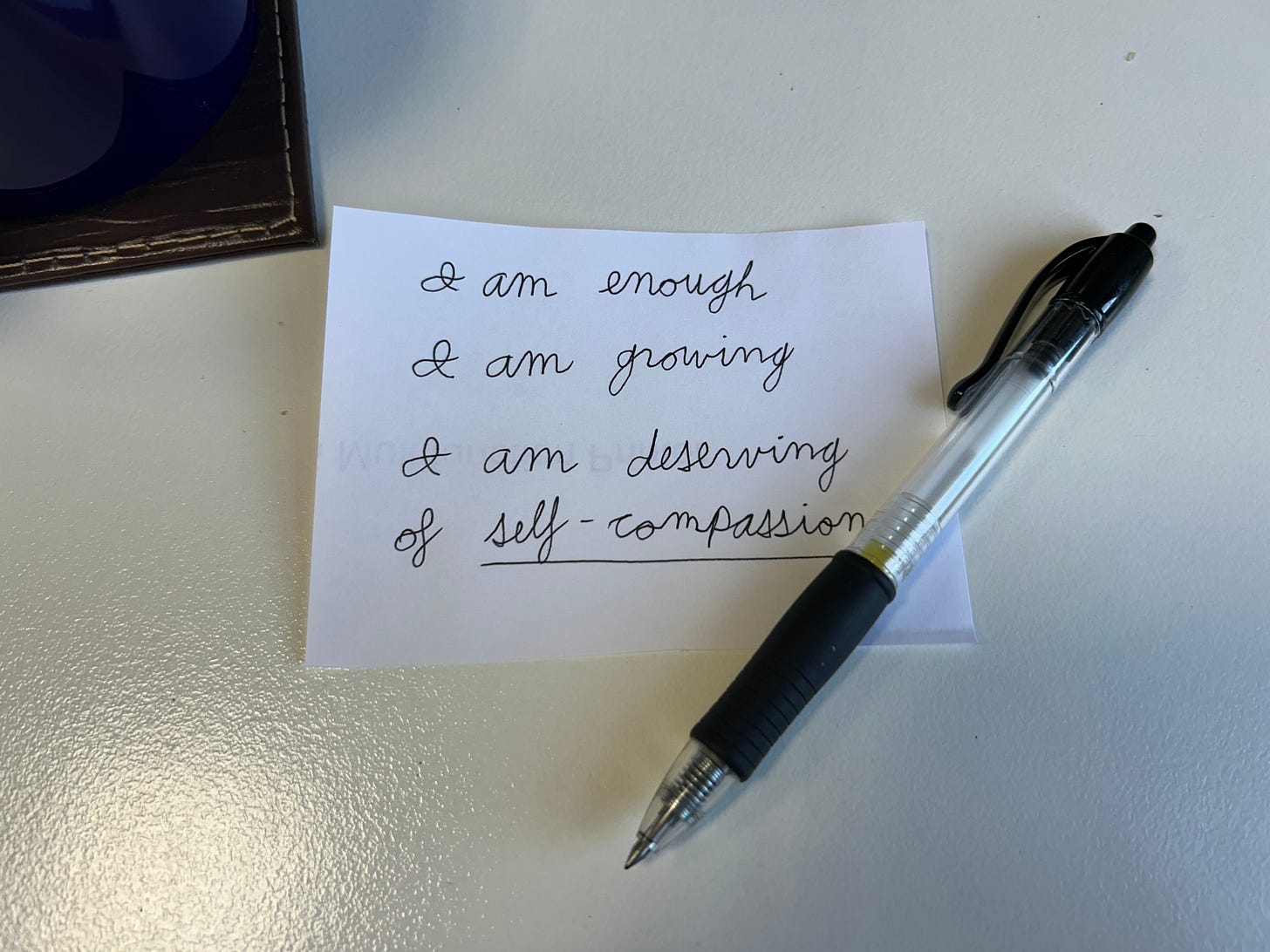Beautiful Lies
"Beauty Sick: How the Cultural Obsession with Appearance Hurts Girls and Women" by Renee Engeln, a professor at Northwestern University.
“Beauty Sick” by Renee Engeln perfectly encapsulates the struggle many women face as they aspire to be beautiful in this beauty-sick world.
“We have created a culture that tells women the most important thing they can be is beautiful,” Engeln writes. “Then we pummel them with a standard of beauty they will never meet. After that, when they worry about beauty, we call them superficial. Or even worse, we dismiss their concerns altogether saying, ‘Everyone is beautiful in their own way,’ and admonishing them to accept themselves the way they are.” (8)
My Beauty Sick Life
My story is everyone’s story.
Young Laura-Anne was still the people-pleasing person she is today. Therefore, when she discovered beauty was a highly valued attribute, she set out to succeed, as she did with everything else. However, she wasn’t quite sure what makes someone beautiful. After careful observation, she discovered that thinness seemed synonymous with beauty. Mini-Laura-Anne deduced that to be beautiful, she must lose weight.
Unfortunately, Laura-Anne chose an inopportune time to go on the weight loss journey and she’d be fighting forces outside her control. The more poorly she seemed to be at losing weight, the more mental, emotional, and physical energy she put toward her goal: food became terrifying and exercise was a means to an end. It’s too bad because she didn’t have much mental, emotional, or physical energy to spare.
She’d go through phases where she’d realize the disproportionate amount of energy she was putting toward this one singular goal wasn’t worth it. But societal messages are strong and it didn’t take much to be plummetted back into the world of inadequacy where all of one’s problems could somehow be attributed to lack of beauty (i.e. not being thin enough) and if one could just attain beauty (i.e. thinness), then everything would fall into place.
But one day an unusual event had a rather paradoxical effect on me. A nasty comment made me realize how strange it was that I had somehow been enrolled in a beauty contest where I must always be monitoring my appearance. A key part of this monitoring is knowing that my appearance is not good enough. I am not good enough; therefore, I must always be trying to do something to improve it. But what if I simply resigned from this strange beauty contest? Here, I found freedom and freedom was beautiful.
“It is Not Your Job” by Caitlyn Siehl
when your little girl
asks you if she’s pretty
your heart will drop like a wineglass
on the hardwood floor
part of you will want to say
of course you are, don’t ever question it
and the other part
the part that is clawing at
you
will want to grab her by her shoulders
look straight into the wells of
her eyes until they echo back to you
and say
you do not have to be if you don’t want to
it is not your job
both will feel right
one will feel better
she will only understand the first
when she wants to cut her hair off
or wear her brother’s clothes
you will feel the words in your
mouth like marbles
you do not have to be pretty if you don’t want to
it is not your job
-Appears in “Beauty Sick”
How beautiful it was to eat without all the extra mental weight that required me to know exactly how “healthy” something is, how much damage it will do (i.e. how many calories it contains), and the corresponding emotional battle of attributing pride to “healthy” food and self repulsion to “unhealthy” food. How beautiful it was to run for the sake of running. I saw the trees. I heard families enjoying time together around a bonfire. When I grew tired, instead of becoming angry at myself, I simply slowed down.
I pitied mini-Laura-Anne for all the unnecessary, self-inflicted pain. I began to realize that my story was not unique. I saw this pain in many, almost all, women.
Engeln’s book calls out this pain, this beauty sickness, afflicting women.
“Beauty sickness is what happens when women’s emotional energy gets so bound up with what they see in the mirror that it becomes harder for them to see other aspects of their lives,” Engeln writes. (15)
Engeln identifies the forces at play and how we contribute to them. She ends with hope, showing science-backed methods to fight beauty sickness.

Part 1: The Forces at Play
Beauty sickness does not affect everyone equally, it is dehumanizing, and (as with almost everything) it is driven by money.
Beauty Sick Gender Disparities
Although anyone can suffer from beauty sickness, women are most affected.
85 to 90% of plastic surgeries are done on women. (35)
90% of people with eating disorders are women. (35)
Girls are more likely than boys to report they are “too fat.” (37)
Being a girl is a better predictor of whether a young person feels “too fat” than body size. (37)
“Normative discontent … it’s considered normal for girls or women to be deeply disappointed when they look in the mirror.” -Renee Engeln (Beauty Sick, 36)
During puberty, girls move farther away from society’s beauty ideal while boys move closer. (37)
On average, men overestimate their own attractiveness while women underestimate theirs. (38)
Men are handsome (comes from the word handy), while women are beautiful (ornamental). (42)
“Too often, for women, the body becomes an enemy. It becomes something that must be tamed into submission.” -Renee Engeln (Beauty Sick, 40)
The Objectification of Women
Objectification is when you’re treated as an object without thoughts, feelings, goals, or desires. Your body exists to make others happy. Women are often objectified.
“Men dream of women. Women dream of themselves being dreamt of. Men look at women. Women watch themselves being looked at. Women constantly meet glances which act like mirrors, reminding them of how they look or how they should look. Behind every glance is a judgment. Sometimes the glance they meet is their own, reflected back from a real mirror… She is almost continually accompanied by her own image of herself. While she is walking across the room, or while she is weeping at the death of her father, she can scarcely avoid envisaging herself, walking or weeping. From earliest childhood she has been taught and persuaded to survey herself continually. She has to survey everything she is and everything she does because how she appears to others, and in particular how she appears to men is of crucial importance for what is normally thought of as the success of her life.” Excerpt from “Ways of Seeing” by John Berger.
Studies show that when looking at men, people use areas of their brain that take in an image as a whole, while when women are looked at, people use areas of their brain that look at parts. People are viewed as a whole while objects are dissected into parts. Furthermore, women are still hired to be looked at, sending an implicit message that women are passive decorations.
Beauty Sickness For Profit
Engeln has her students and readers complete an exercise similar to the following.
Write down everything you buy for beauty purposes over a year (makeup, hair masks, razors, salon appointments, etc.)
Estimate the cost of every item. Add it together.
Now estimate the time you spend per day, week, and year using these products and services. Add that together.
This exercise illuminates two facts:
People spend much of their often limited money and time on beauty.
Women spend a disproportionate amount of time and money on appearances compared to men.
The $446 billion beauty industry contributes to a vicious cycle.
Make women dissatisfied with themselves by presenting them with images of above-average-looking women, showing the target consumers (i.e. women) how they fall short.
Promise the women a product that will provide (often temporary) relief from this dissatisfaction that advertisers have implanted.
Repeat.
“The media-promoted beauty ideal for women is unattainable by design,” Englen writes. “Advertisers need you to feel yourself falling short of the ideal because then you’ll consider buying a product in an attempt to move yourself closer to it.” (158)
The Perfect Woman
A woman enters an ornate building and walks to the front desk.
“I’m here to turn in my application,” the woman says, handing over an envelope.
“The application?” the man asks in disbelief.
“Yes,” the woman says hesitantly, handing him the envelope.
The man looks at the envelope. Sprawled on the front in calligraphic letters are the words, “The Perfect Woman Application.” The man opens the envelope. Inside are old, stained pages listing the requirements.
The man laughs. “See here. It says the perfect woman can’t know that she’s the perfect woman. You got to be humble, that’s the thing. Your being here clearly shows that you fail to meet this requirement.”
“Catch-22, isn’t it?” the woman says. “Don’t worry. I don’t believe I am. I listen openly and receptively, especially to the one key message ringing strongly under every word stating that I am not enough. But my entire life has been dedicated to remedying that by meeting these requirements. This single pursuit has taken up every corner of my mental space. It’s taken a painful toll on my body. My money, friendships, and quality of life have drastically suffered. Despite everything, I could still be better. I’m only here because I’m getting old. I’m running out of time.”
“I see,” the man says. “I’ll review your application. We’ll get back to you in 2 to 3 weeks.”
One year later, the woman receives an envelope. Opening it she reads, “Your Perfect Woman Application has been denied. The requirements for the Perfect Woman have been updated. See the enclosed for more information. We encourage you to continue on this journey to become the Perfect Woman. It will take a little more self-control, determination, time, and money. There you will find all the happiness and success that you have ever dreamed of!”
The woman stands up, rips the letter in half, and throws it away.
“Beautiful lies,” she says, shaking her head.
Part 2: You Are Not Blameless
Although it would be convenient to put all the blame for beauty sickness on money-seeking entities, they are not the only cause. In beauty sickness, the victims are also the perpetrators. Fat talk, or negative commentary on the appearance of others or oneself, reinforces, especially to impressionable young girls, that appearance is vital and many, often common, attributes are undesirable. The girls then internalize this fat talk.
Even positive comments can be damaging as they contribute to the narrative that women are for looking at and the most prized attribute they can have is beauty.
I want to apologize to all the women
I have called pretty
Before I’ve called them intelligent or brave.
I am sorry I made it sound as though
something as simple as what you’re born with
Is the most you have to be proud of
when you have broken mountains with your wit
from now on i will say things like
you are resilient, or you are extraordinary
not because i don’t think you’re beautiful
but because i need you to know
you are more than that
-Rupi Kaur, excerpt from “Milk and Honey”
-Appears in “Beauty Sick”
The most readily available technique for fighting beauty sickness that we have in our arsenals is convincing the struggling woman or girl that she is beautiful. Dove created a “Real Beauty” advertising campaign centered on this message where they encouraged women to think about their appearance and why they are beautiful. However, Engeln’s research found this approach is counterproductive. If a woman doesn’t feel attractive, she probably isn’t going to believe you if you try to tell her otherwise. She can easily come up with all the ways she does not meet the beauty ideal. They’re readily made available to her. If you ask her to come up with her own reasons for why she’s beautiful, her possible struggle to come up with an answer will have her feeling much worse than before. Finally, bringing a woman’s attention to her body, especially when she wasn’t previously thinking about it, brings her back to the mental drain of body monitoring, which often leads her to body shame and disappointment.
So if telling a struggling friend, family, or self, “You are beautiful!” is ineffective, then WTF are we supposed to do?
Part 3: Curing Beauty Sickness
Engeln’s lab at Northwestern University has uncovered some answers to curing beauty sickness.
1. Functional Orientation
Focus on what your body can do rather than its appearance.
“My body is a vessel to do what I love,” -interviewee in Beauty Sick by Renee Engeln (360)
Engeln’s lab conducted a study. One group of participants wrote positive thoughts about their appearance while a separate group wrote positive messages about what their bodies can do. The latter group, which focused on bodily function rather than their body’s appearance, were more satisfied with their bodies compared to the first group.
Take 10 minutes to write a letter to your body, expressing gratitude for everything your body does for you.
Exercise: A Blessing or a Curse?
Exercise is a powerful tool that lets you appreciate your body’s functionality while simultaneously releasing feel-good endorphins. It’s also a powerful method to prevent and combat mental and physical diseases. However, exercise has been tainted through body-sick messaging that portrays it as a way to lose weight and achieve the “bikini body.”
“How we talk about exercise – particularly women’s exercising – too often reinforces the notion that the primary reason to move your body is to whittle it into something more appealing for others to look at,” Engeln writes (307).
This follows the advertising model you saw earlier. Step 1: Make the woman feel dissatisfied with her body (e.g. her body does not look like a “bikini body”). Step 2: Provide the woman with relief from this dissatisfaction (e.g. “Exercise and the pounds will come right off!”)
“Have you ever thought about losing weight?” the doctor asked.
“I am a woman in America. What do you think?” a flabbergasted Amy responded. -Beauty Sick, 296
Women who exercise to change their body shape are more likely to be dissatisfied with their body and have disordered eating. However, those who exercise to feel better, get stronger, manage stress, or connect with people are more likely to continue exercising and feel better about themselves.
2. Self-Compassion
“You don’t take care of things you hate.” -Renee Engeln (Beauty Sick, 116)
Self-compassion is when you treat yourself with kindness and accept your imperfections. You speak to yourself like you would a dearly loved friend.
Take 10 minutes to write a letter about your body from the perspective of an unconditionally loving imaginary friend. This friend is aware of your body’s flaws and strengths. Write what your unconditionally loving imaginary friend might say to show you that your body is appreciated just the way it is.
Women in Engeln’s study completed a variation of the above prompt. They, compared to the controls (people who wrote about something else), had a much higher body satisfaction and a more positive mood.
3. Vote With Your Wallet
Money is powerful. Although it drives the forces behind beauty sickness, it can also be used against it. Avoid companies that use destructive images or messages. Reward companies that send positive ones. Voting with your wallet will require research and sacrifices.
4. Read “Beauty Sick”
Engeln wrote a 400-page book overflowing with research, data, and interviews. This post omits many powerful quotes, stories, and data. You can easily buy her book (I recommend from a local bookstore) or check it out at a library.
Final Thoughts
We often accept and abide by the rules and conditions we were given. It can be difficult to see the “what ifs.” But sometimes the illusion is shattered and we are left to see a glimpse of a broken system. Engeln helps shatter this illusion for us and uncovers the broken pieces. However, she can not put them back together. We have to do that on our own.
“Please take care of yourself.” (Beauty Sick, 350)









